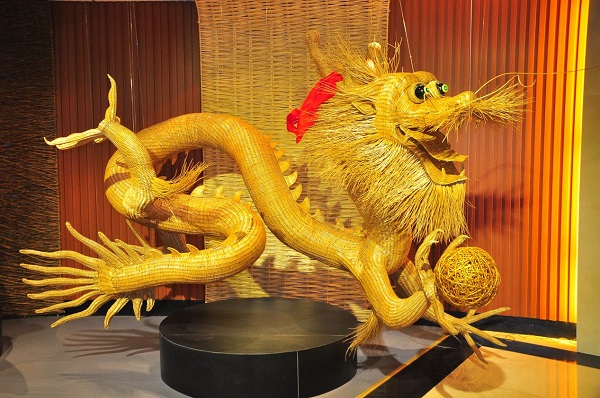Shandong's county weaves history into willow artworks
The willow weaving technique in Linshu county, Shandong province, boasts a rich history spanning over 1,400 years, earning it a distinguished reputation for its traditional craftsmanship.
The role of willow weaving in Linshu county has transcended its humble beginnings of crafting daily necessities for self-sufficiency. It has blossomed into a key local industry, and its value has steadily increased over time, reaching global recognition.

The dragon figure created by the willow weaving artist. [Photo by Integrated Media Center of Linshu county/for chinadaily.com.cn]
Certain willow twigs, after undergoing preliminary processes like skin removal and sun-drying, transform into versatile materials for crafting various daily supplies such as baskets, dustpans, and boxes. The weaving process itself is exceptionally refined, employing intricate techniques like twining, tying, threading, winding, twisting, and stacking.
The willow weaving products from Linshu county are not just local treasures but global ambassadors of culture, utility, and environmental value. As a result, they command a substantial export market share, accounting for 40 percent of Shandong province's total and 26 percent of China's. With an annual output totaling 4 billion yuan ($55.19 million), Linshu county has earned recognition as the global capital of willow weaving craftsmanship, as acknowledged by the World Crafts Council.
Linshu county has seen the emergence of numerous master artisans through generations of inheritance. Notable figures include Yang Jinbang, a national intangible cultural heritage inheritor of this technique, and Xie Yinquan, a creative talent in willow weaving born in the 1980s. Their dedication has propelled Linshu's willow weaving onto the world stage. (Edited by Zhang Ying)








